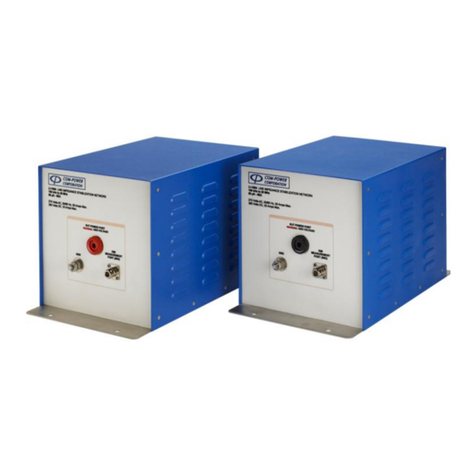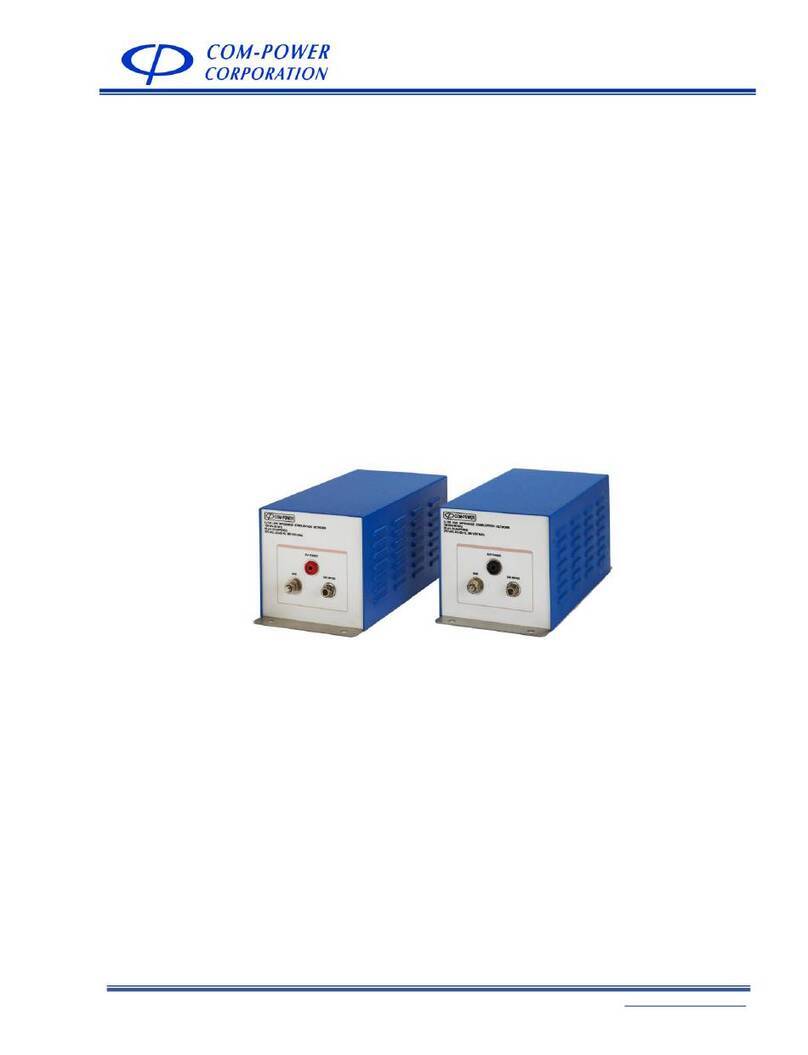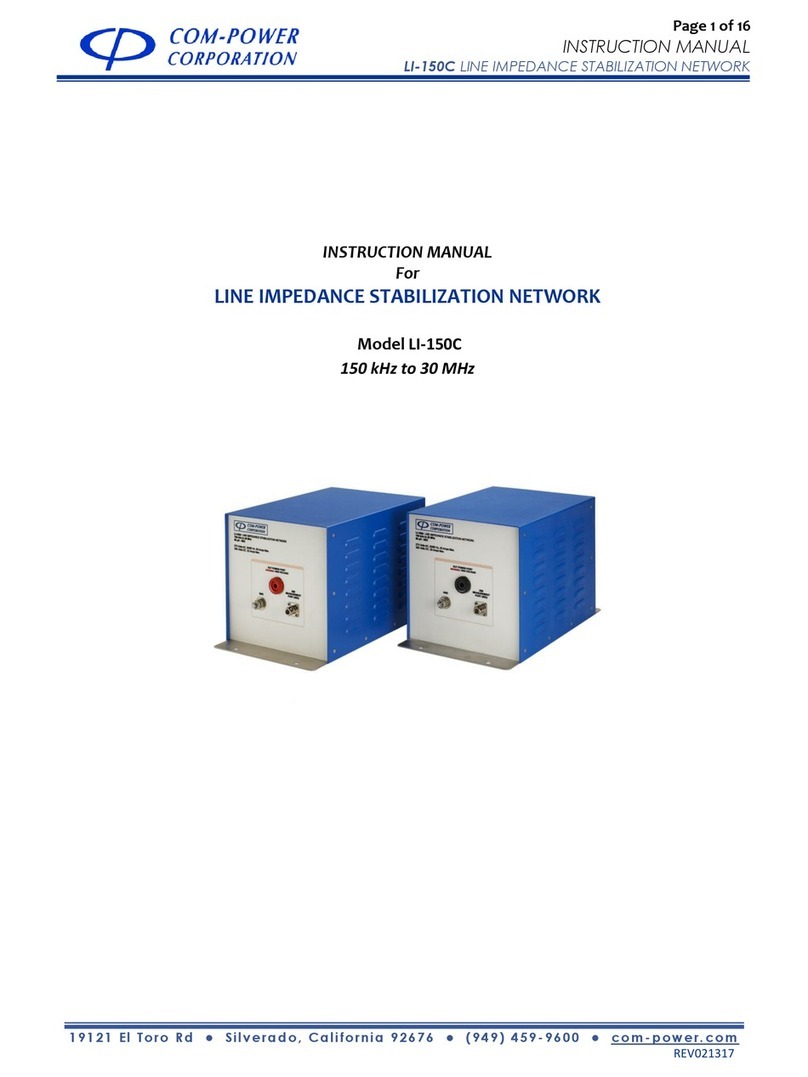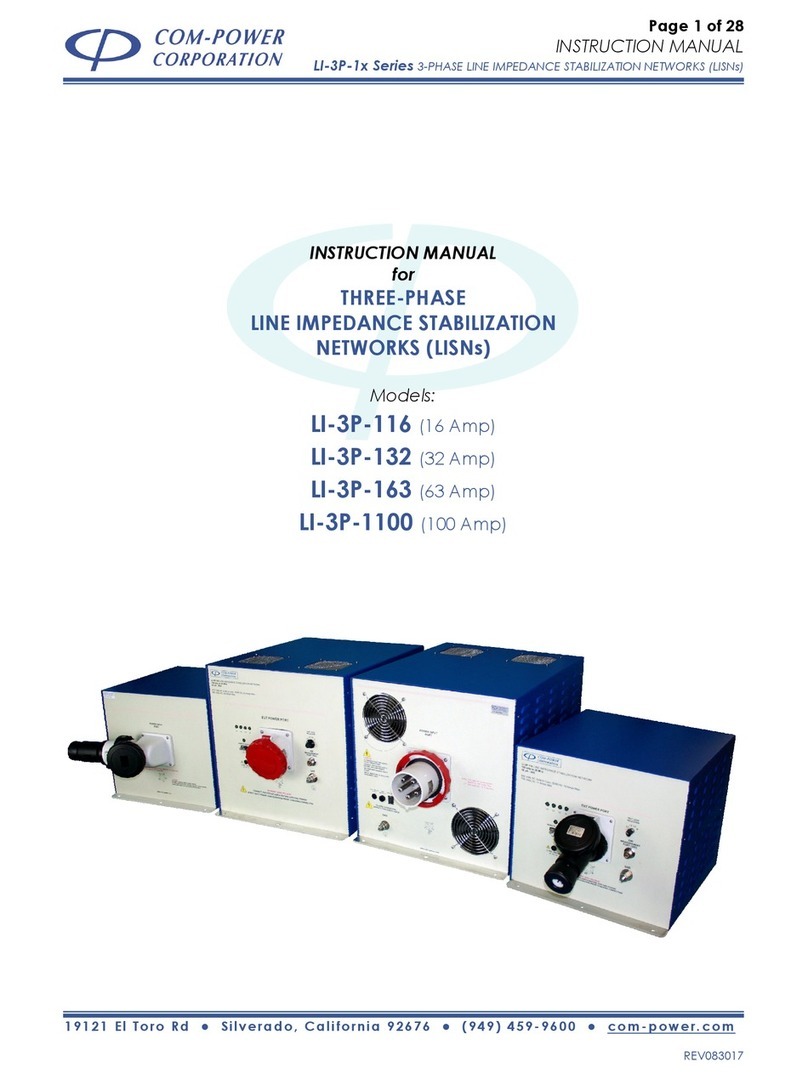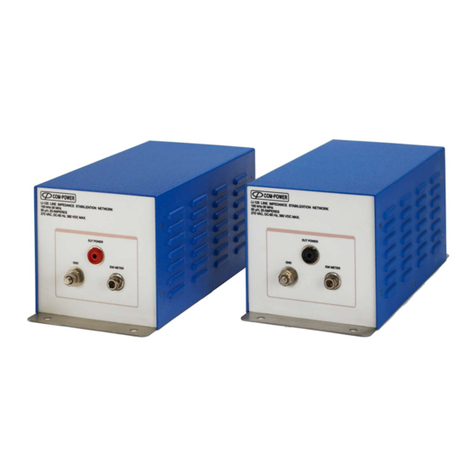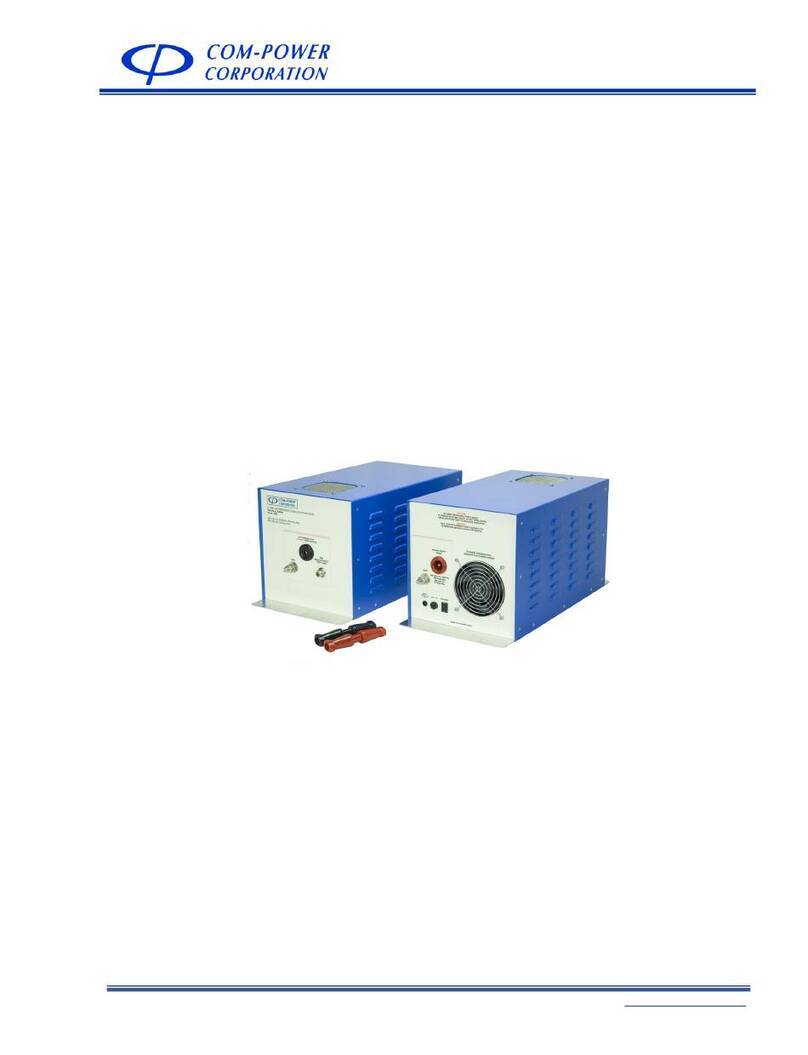
Page 2 of 24
INSTRUCTION MANUAL
ISN T8 IMPEDANCE STABILIZATION NETWORK (ISN)
19121 El Toro Rd ●Silverado, California 92676 ●(949) 459-9600 ●com-power.com
REV080515
Table of Contents
1.0 Introduction........................................................................................................................... 4
2.0 ProductInformation ..............................................................................................................5
2.1 Overview ..................................................................................................................................... 5
2.2 StandardISNT8Items(included).............................................................................................. 5
2.3 AdditionalISNT8TestAccessories(optional).......................................................................... 5
2.4 ISNCalibrationKit....................................................................................................................... 6
2.5 OtherequipmentavailablefromCom‐Power........................................................................... 7
3.0 ProductSpecifications .......................................................................................................... 8
4.0 ProductImplementation ...................................................................................................... 9
4.1 ProductApplication.................................................................................................................... 9
4.1.1 WhencantheISNT8beused?...................................................................................................9
4.1.2 HowdoIchoosewhichLCLAdaptertouse?............................................................................ 9
4.1.3 WhatisLCL? ...............................................................................................................................10
4.2 ProductConnectionDetails ...................................................................................................... 11
Figure1–Equipmentsetupforstandardpinarrangements ..................................................... 11
Figure2–Equipmentsetupfornon‐standardpinarrangements.............................................. 11
4.2.1 ConnectorPin‐outs.................................................................................................................... 11
Figure3–ISNT8ConnectorPinArrangements/PairDesignations ............................................ 11
Figure4–RJ45LCLAdapterPinArrangements .........................................................................12
Figure5–RJ45ConnectingAdapterPinArrangements.............................................................12
Figure6–RJ11LCLAdapterPinArrangements ..........................................................................12
Figure7–RJ11ConnectingAdapterPinArrangements..............................................................12
Figure8–(8)1mmbananajackLCLAdapterPinArrangements...............................................12
Figure9–(8)1mmbananajackConnectingAdapterPinArrangements ..................................12
4.2.2 RJ45ConnectorWiring–Commonethernetcables ...............................................................13
Figure10–StandardPatchCable–ConnectorWiringDiagram ................................................13
Figure11–10/100Mb/sCross‐overCable–ConnectorWiringDiagram......................................13
Figure12–1Gb/sCross‐overCable–ConnectorWiringDiagram...............................................13
4.3 TestSetupDetails......................................................................................................................14
Figure13–AcceptableEquipmentArrangementsforTestSetup ............................................ 14
4.4 Measurement ............................................................................................................................15
4.4.1 WhatTypeofCoaxialCablingShouldBeUsedwiththeISNT8?............................................15
4.4.2 UseofAttenuatororTransientLimiterforInputProtection .................................................15
4.4.3 CorrectionFactors.....................................................................................................................17






